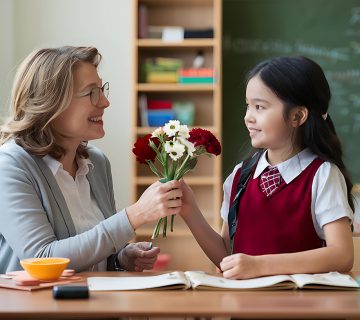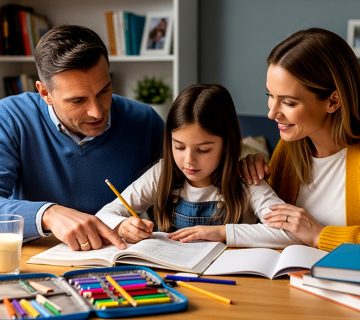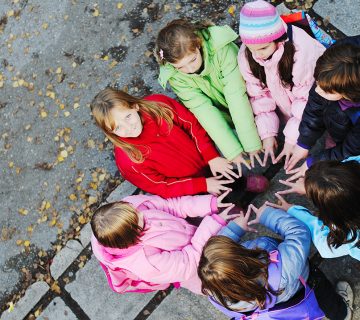Conflicts among students are an inevitable part of school life. However, how children respond to these situations can either support their social and emotional development or, on the contrary, lead to aggression and isolation. The main goal of education is to prevent violence and foster the ability to resolve conflicts peacefully. This article presents practical, science-based strategies for teaching children how to behave properly during school conflicts.
Why Do Children Experience Conflict at School?
Differences of opinion, competition, or feeling ignored are common reasons behind student disputes. Children often lack the skills to express their feelings and may resort to physical or verbal reactions. Understanding the root of conflict is the first step in teaching proper behavior.
Common causes include:
-
Lack of communication and conversation skills
-
Feelings of injustice or discrimination
-
Imitation of adults or media behaviors
-
Poor anger and emotional regulation
The Teacher’s Role in Managing School Conflicts
A teacher’s behavior in the first moments of a conflict significantly influences the outcome. Harsh reactions or immediate punishment usually lead to secrecy and fear. Teachers should calmly assess the situation and encourage each child to express their feelings.
Recommended steps for teachers:
-
Prevent escalation without judging either side
-
Separate students to create calm
-
Practice active listening with both children
-
Encourage dialogue to find a mutual solution
-
Use logical consequences rather than punitive measures
How to Teach Children Conflict Resolution Skills
Conflict resolution is a learnable skill and should be taught from early elementary years. The goal is for children to learn how to express their feelings, respect others’ emotions, and find solutions collaboratively.
1. Teaching Emotional Identification
Children must learn to name their feelings (e.g., “I’m angry,” “I feel it’s unfair”). Parents and teachers can use emotion cards or short conversations to practice this skill.
2. Teaching Active Listening
During conflict, children often focus only on defending themselves. Games like “Listen and Repeat” help them practice listening without judging.
3. Practicing Dialogue Instead of Shouting
Teachers can use role-play to help students practice respectful communication. For example:
“When you took my pencil, I felt upset” instead of “You always steal my stuff!”
4. Teaching Group Decision-Making
Children learn that solving shared problems requires listening to everyone’s ideas. Group games like “Cooperation Bridge” or collaborative storytelling help develop this skill.
The Role of Parents in Teaching Conflict Resolution
Parents complete the school’s educational process. Children closely observe how adults handle disagreements and often imitate their behavior. Parents who resolve conflicts calmly and through conversation model healthy conflict resolution for their children.
Practical tips for parents:
-
Allow your child to express feelings without immediately judging them
-
Act as a neutral referee in conflicts between siblings
-
Analyze the situation together afterward to highlight helpful and harmful behaviors
5 Games for Teaching Conflict Resolution at Home or School
1. Conflict-Resolution Role-Play
Two students act out a disagreement. The goal is to find alternative sentences that lead to dialogue instead of shouting.
2. “Red Light/Green Light” for Emotions
Children learn to stop when angry (red light), breathe, and then speak calmly (green light).
3. “Fair Judge” Game
Students reenact a conflict, and one child acts as a neutral judge who must make a fair decision based on reasoning.
4. “Conversation Cards”
Cards with sentence starters (like “I feel…,” “I would like…”) help children learn how to start conversations respectfully.
5. “Cooperative Puzzle”
Students complete a puzzle in groups. If a conflict arises, they must resolve it through conversation to continue the task—an effective hands-on conflict resolution practice.
Frequently Asked Questions About Behavior During Conflict
Should children always be removed from conflict?
No. Controlled conflict experiences are part of social development. The goal is to learn management, not complete avoidance.
What if a child is constantly involved in fights?
This may indicate communication difficulties or hidden anxiety. It’s best to consult the school counselor and develop a targeted training plan.
How can school conflicts become learning opportunities?
After each conflict, teachers can lead a group discussion to analyze the situation and teach lessons about anger control and respect.
The School’s Role in Promoting a Culture of Dialogue
A successful school provides a safe space for students to express feelings. Programs such as “Friendship Week,” “Dialogue Day,” or moral-themed performances can help build a culture of constructive interaction.
Conclusion
Conflicts will always happen at school, but what matters is how children handle them. Teaching conflict resolution is a long-term investment in a peaceful and respectful society. With cooperation between parents and teachers, children can learn that conflict is not a threat—it is an opportunity for growth and mutual understanding.







